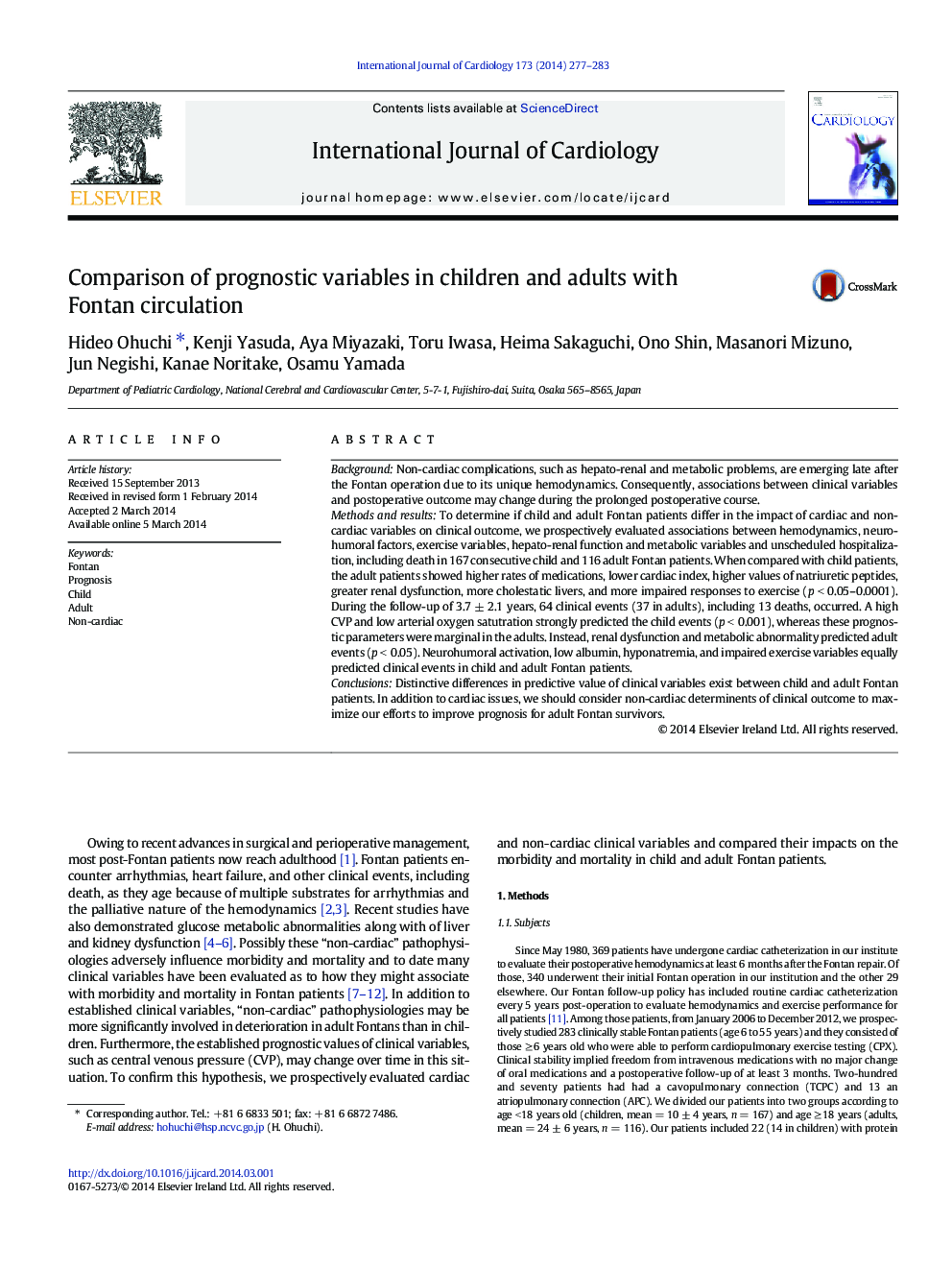| Article ID | Journal | Published Year | Pages | File Type |
|---|---|---|---|---|
| 5972269 | International Journal of Cardiology | 2014 | 7 Pages |
BackgroundNon-cardiac complications, such as hepato-renal and metabolic problems, are emerging late after the Fontan operation due to its unique hemodynamics. Consequently, associations between clinical variables and postoperative outcome may change during the prolonged postoperative course.Methods and resultsTo determine if child and adult Fontan patients differ in the impact of cardiac and non-cardiac variables on clinical outcome, we prospectively evaluated associations between hemodynamics, neurohumoral factors, exercise variables, hepato-renal function and metabolic variables and unscheduled hospitalization, including death in 167 consecutive child and 116 adult Fontan patients. When compared with child patients, the adult patients showed higher rates of medications, lower cardiac index, higher values of natriuretic peptides, greater renal dysfunction, more cholestatic livers, and more impaired responses to exercise (p < 0.05-0.0001). During the follow-up of 3.7 ± 2.1 years, 64 clinical events (37 in adults), including 13 deaths, occurred. A high CVP and low arterial oxygen satutration strongly predicted the child events (p < 0.001), whereas these prognostic parameters were marginal in the adults. Instead, renal dysfunction and metabolic abnormality predicted adult events (p < 0.05). Neurohumoral activation, low albumin, hyponatremia, and impaired exercise variables equally predicted clinical events in child and adult Fontan patients.ConclusionsDistinctive differences in predictive value of clinical variables exist between child and adult Fontan patients. In addition to cardiac issues, we should consider non-cardiac determinents of clinical outcome to maximize our efforts to improve prognosis for adult Fontan survivors.
